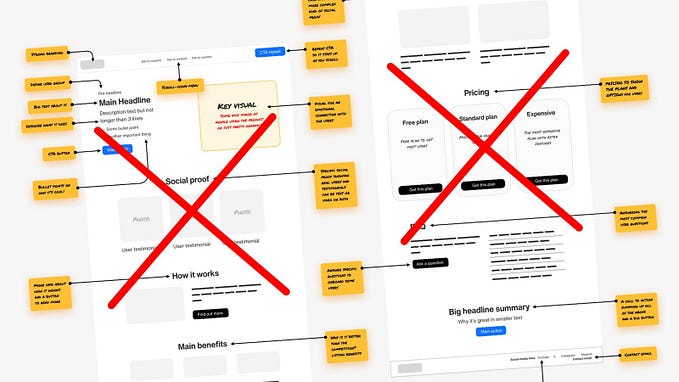You're reading for free via Alex Pedicini's Friend Link. Become a member to access the best of Medium.
Member-only story
How to actually ‘work backwards’
Build your next product by working backwards.
 Working Backwards is an approach to product development made popular by Amazon. This process can be applied for any new product, service, or feature. Putting this idea into practice requires starting with the customer, think big, and focus on the riskiest assumption upfront.
Working Backwards is an approach to product development made popular by Amazon. This process can be applied for any new product, service, or feature. Putting this idea into practice requires starting with the customer, think big, and focus on the riskiest assumption upfront.
Start with the customer
Working backward always starts with the customer and thinking through the benefits you can provide them. Be default, customers are not likely to care about a new product or solution. You should be able to clearly and simply articulate the compelling value that customers will receive and why they should try this new solution. Focus on who you are building for, what problem they have, and how the current options available to them are falling short.
“As we have tried to come up with a strategy and a vision for Apple, it started with ‘What incredible benefits can we give to the customer? Where can we take the customer?’” — Steve Jobs, 1997
Think Big
Is this idea big enough to be meaningful to the business? While your initial solution may not be big, you should be able to articulate a path to drive towards that massive customer benefit and how that will impact the business. There’s a reason this is one of Amazon’s Leadership Principles — “Thinking small is a self-fulfilling prophecy. Leaders create and communicate a bold direction that inspires results.”
Focus on the riskiest assumptions first

There is a concept in journalism known as the ‘Inverted Pyramid’ which structures how articles should contain the most important information upfront, followed by the additional details and supporting info. This helps to focus the readers' attention on the…
Product managers can learn from following a similar approach and focusing on the biggest risks and unknowns first. Ask yourself “What must be true for this idea to work?” to identify the most critical assumptions that should be validated and tested before proceeding. A big bet will naturally contain many assumptions, but tackling the biggest unknowns and risks first will enable you to learn quickly how viable the idea is.
Working Backwards in practice
So what is the output of ‘working backward’ look like? I can tell you it is certainly not a list of Jira tickets or tasks. The goal should be to paint an inspiring picture to rally and motivate the company and teams. This can take many forms, but I’ll highlight a few public examples:
Mock Press Release
Ian Mcallister, former Director at Amazon, has shared a template for how Amazon creates mock Press Releases for any new product development.
Vision Prototype or Mock
Gitlab has shared some of its design mocks publicly to showcase its product strategy and roadmap.
Video Demo
Some well-known products started as nothing more than video demos. Dropbox famously built its initial hype and waitlist from a simple video demo showcasing the product before it was ready. Boosted launched its electric skateboards on Kickstarter with this inspiring hype video.









